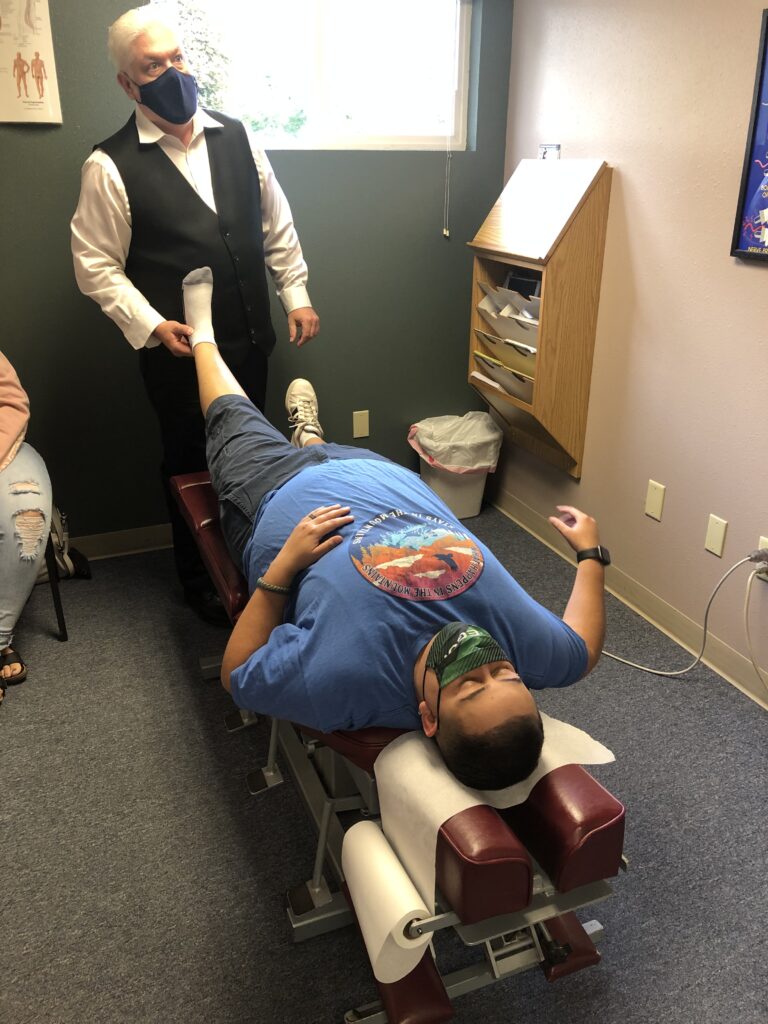You might not realize how much joint flexibility impacts your daily life and overall well-being. It's more than just being able to touch your toes; it influences your mobility and performance in various activities. By understanding the right combination of stretching techniques, strength training, and mindful practices, you can access the potential for greater flexibility. Curious about which specific strategies can make a difference? What if one adjustment in your routine could lead to significant improvements? Let's explore the steps to enhance your joint flexibility effectively.
Understanding Joint Flexibility
When it comes to understanding joint flexibility, it's essential to recognize that flexibility isn't just about how far you can stretch. It involves the range of motion around your joints and the ability of your muscles and tendons to allow movement without restriction. This range can vary considerably from person to person, influenced by factors like age, genetics, and overall physical activity.
You might think that flexibility is primarily about being able to touch your toes or perform a split, but it's more nuanced than that. Your joints, including the knees, hips, shoulders, and spine, all play a role in your overall flexibility. Each joint's structure determines how much movement is possible. For example, ball-and-socket joints like the hips allow a greater range of motion compared to hinge joints like the knees.
Moreover, understanding joint flexibility means recognizing the importance of your connective tissues. Ligaments and tendons connect muscles to bones and can affect your flexibility. If these tissues are tight or stiff, your overall flexibility can be compromised. That's why maintaining a balance between strength and flexibility is key to joint health.
You should also consider the impact of regular activity on your flexibility. Engaging in diverse movements and exercises can help maintain and improve your joint range of motion.
Ultimately, being aware of your body's unique capabilities and limitations will empower you to enhance your joint flexibility effectively.
Importance of Warm-Up Exercises
Before diving into any physical activity, warming up is essential for maintaining joint flexibility and preventing injuries. You might think that jumping straight into your workout saves time, but neglecting to warm up can lead to stiffness and increased risk of strains or sprains.
A proper warm-up prepares your body for the demands of exercise by gradually increasing your heart rate and blood flow to your muscles, which helps lubricate your joints.
Incorporating warm-up exercises into your routine can enhance your performance considerably. As you gently move your limbs and joints, you activate the muscles you'll rely on during your workout. This activation not only improves your range of motion but also allows for better coordination and balance.
You'll notice that your movements feel smoother and more controlled.
Take a few minutes to engage in dynamic movements that mimic the activities you plan to do. For example, if you're about to run, incorporate leg swings, high knees, or light jogging. These movements elevate your body temperature and prepare your muscles for more intense exertion.
Additionally, warming up mentally prepares you for your workout, helping you focus on your goals and establish a positive mindset. When you prioritize warm-up exercises, you set the stage for a more effective and enjoyable workout session.
Stretching Techniques for Flexibility
Stretching techniques for flexibility play an essential role in enhancing your overall mobility and joint health. Incorporating effective stretching routines into your daily life can make a significant difference in how you move and feel.
By focusing on different types of stretches, you can target specific muscle groups and improve your flexibility over time.
Here are five effective stretching techniques you can try:
- Static Stretching: Hold a stretch in a comfortable position for 15-30 seconds to lengthen the muscle.
- Dynamic Stretching: Use controlled movements, like leg swings or arm circles, to prepare your muscles for activity.
- Proprioceptive Neuromuscular Facilitation (PNF): Involves a combination of stretching and contracting the muscle, often with a partner, to enhance flexibility.
- Ballistic Stretching: Utilize momentum to push beyond your normal range of motion, but be cautious as it can lead to injury if not done properly.
- Active Stretching: Engage the muscle opposite the one you're stretching, improving flexibility while also building strength.
To get the most out of these techniques, guarantee you warm up first to avoid injury.
Listen to your body and avoid pushing yourself too hard—this isn't a race!
Consistency is key. Integrating these stretching techniques into your routine can boost your flexibility, making daily activities easier and more enjoyable.
You'll soon notice the benefits as you move more freely and with less discomfort.
Incorporating Yoga Into Your Routine
How can you seamlessly incorporate yoga into your routine to enhance joint flexibility? Start by setting aside just 15 to 30 minutes a few times a week. You don't need a lot of time to feel the benefits. Choose a specific time that works for you—maybe first thing in the morning or right before bed. Consistency is key, so try to stick to your chosen schedule.
Next, find a style of yoga that resonates with you. Hatha and Yin yoga are great for improving flexibility, as they focus on holding poses longer and gently stretching your joints. You can easily find free online classes or apps that guide you through various routines.
Begin with beginner-friendly poses like Downward Dog, Cat-Cow, and Child's Pose, which target multiple joints and help build your foundational flexibility.
Consider incorporating yoga into your existing workouts. A short yoga session can serve as an excellent warm-up or cool-down, preparing your joints for more intense activities or helping them recover afterward.
If you're short on time, even five minutes of stretching can make a difference. Short, daily sessions can be more beneficial than longer, infrequent ones.
Finally, don't hesitate to join a local class or community group. Practicing with others can keep you motivated and help you learn new techniques.
Strength Training for Joint Support
Strength training isn't just about building muscle; it plays an essential role in supporting your joints.
By incorporating specific exercises, you can enhance joint stability and reduce the risk of injury.
Let's explore the benefits of strength training and the best exercises for joint support.
Benefits of Strength Training
When it comes to maintaining healthy joints, incorporating strength training into your routine can make a significant difference. This form of exercise offers numerous benefits that directly support joint health.
By building stronger muscles around your joints, you provide them with better protection and stability. Here are some key advantages you'll experience:
- Enhanced muscle support: Stronger muscles help to stabilize joints and absorb shock during movement.
- Improved range of motion: Strength training helps maintain flexibility, allowing you to move more freely and comfortably.
- Injury prevention: A well-rounded strength program reduces the risk of injuries by ensuring your muscles, tendons, and ligaments are conditioned properly.
- Better balance: Increased strength contributes to improved balance, which is essential for preventing falls and joint-related injuries.
- Long-term joint health: Consistent strength training can help combat age-related changes in joint function, keeping you active for years to come.
Exercises for Joint Support
Incorporating targeted exercises into your routine can markedly enhance joint support and stability. Strength training is essential for keeping your joints healthy. By focusing on specific muscle groups around your joints, you create a supportive network that helps absorb impact and reduce the risk of injury.
Start with bodyweight exercises like squats and lunges, which engage your knees and hips, strengthening the surrounding muscles. Resistance bands offer another great option; try banded side steps to target your hip stabilizers. This can improve your balance and overall joint function.
Don't overlook the importance of your core. Exercises like planks and bridges not only strengthen your abdomen but also support your spine and pelvis, keeping your joints aligned.
Aim for two to three strength training sessions a week, including a mix of upper and lower body workouts.
Finally, always listen to your body. If an exercise causes pain, modify it or consult a professional. Consistent strength training tailored to your needs will enhance your joint support, making daily activities easier and reducing your risk of injury in the long run.
Benefits of Regular Mobility Drills
Regular mobility drills can seriously enhance your range of motion, making daily activities easier and more enjoyable.
They also play a vital role in preventing injuries by keeping your joints and muscles flexible.
Plus, you'll likely see improved performance outcomes in your workouts and activities, giving you that edge you've been looking for.
Enhanced Range of Motion
Over time, engaging in mobility drills can greatly enhance your range of motion, leading to improved performance in daily activities and physical workouts.
With a greater range of motion, you'll find it easier to perform tasks that require flexibility and strength. This increased mobility not only boosts your physical capabilities but also enhances your overall quality of life.
Imagine the benefits you'll enjoy:
- Effortlessly reaching for items on the top shelf without straining your back.
- Executing deeper squats during workouts, maximizing your strength training.
- Swinging a golf club with a full range of motion for better accuracy and power.
- Dancing freely at social events, feeling confident and fluid in your movements.
- Playing sports without feeling restricted, allowing you to react quickly and efficiently.
Injury Prevention Techniques
Mobility drills serve as your first line of defense against injuries, greatly reducing the risk of strains and sprains. By incorporating these exercises into your routine, you enhance joint flexibility and guarantee your muscles and ligaments are well-prepared for activity.
When you regularly engage in mobility drills, you increase blood flow to your joints and surrounding tissues, promoting better circulation and nutrient delivery.
Additionally, these drills help you identify and address any imbalances or tightness in your body before they lead to injury. You'll learn to recognize your limits and improve your body awareness, which can prevent overexertion during physical activities.
Consistently practicing mobility exercises also reinforces proper movement patterns, reducing the likelihood of awkward or unsafe movements that could result in injury.
Moreover, mobility drills can be tailored to target specific joints or muscle groups, assuring you're focusing on areas most at risk based on your activity level. This targeted approach allows you to build resilience in those areas, further protecting yourself from injury.
Improved Performance Outcomes
When you incorporate mobility drills into your routine, you'll notice improved performance outcomes that extend beyond just injury prevention.
These drills enhance your overall movement quality, allowing you to achieve more in your physical endeavors. You'll feel your body responding better, whether you're lifting weights, running, or participating in sports.
The benefits of regular mobility drills include:
- Increased range of motion: Your joints will move more freely, allowing for deeper squats and higher jumps.
- Enhanced strength: Improved joint flexibility contributes to better muscle activation, maximizing your power output.
- Improved balance: You'll find your stability increases, making you less prone to falls and better equipped for dynamic activities.
- Faster recovery: After intense workouts, mobility drills help reduce soreness and speed up the healing process.
- Better posture: Regular practice can lead to more aligned joints and a stronger core, positively impacting your daily activities.
Nutrition for Joint Health
Proper nutrition plays an essential role in maintaining healthy joints and reducing inflammation. To support your joint health, focus on incorporating foods rich in omega-3 fatty acids, antioxidants, and vitamins. Fatty fish like salmon, mackerel, and sardines are excellent sources of omega-3s, known for their anti-inflammatory properties. Aim to include these in your diet at least twice a week.
Fruits and vegetables are also important. They're packed with antioxidants that help combat oxidative stress, which can contribute to joint pain. Berries, cherries, spinach, and kale are particularly beneficial. Try to fill half your plate with these vibrant foods at every meal.
Don't forget about healthy fats! Olive oil and avocado are great choices that can help reduce inflammation. You can use olive oil as a dressing or drizzle it over your cooked vegetables for added flavor and health benefits.
In addition, make sure you're getting enough vitamin D and calcium. These nutrients are essential for bone health, which directly impacts your joints. Dairy products, fortified plant-based milks, and leafy greens can help you meet your needs.
Lastly, consider adding nuts and seeds, like walnuts and flaxseeds, to your diet. They provide essential nutrients that promote joint health while also offering protein and fiber.
Hydration's Role in Flexibility
Staying hydrated is essential for maintaining flexibility and preventing joint stiffness. When your body lacks adequate water, it can lead to decreased synovial fluid production. This fluid acts as a lubricant for your joints, allowing for smooth movement. Without enough hydration, your joints may feel tight, making it harder to perform daily activities or engage in physical exercise.
To truly appreciate the impact of hydration on flexibility, imagine the following:
- A well-oiled machine gliding smoothly without friction.
- A sponge soaking up water, expanding and becoming pliable.
- A rubber band easily stretching without snapping.
- A river flowing freely, unblocked by debris.
- A lush garden thriving because of consistent watering.
Each of these images reflects the importance of hydration in maintaining joint health. When you're properly hydrated, you'll notice increased elasticity in your muscles and tendons, allowing for greater range of motion. This means you can bend, twist, and stretch with ease, whether you're reaching for something on a high shelf or participating in your favorite sport.
To optimize your hydration, aim for consistent water intake throughout the day, especially before and after workouts. Pay attention to your body's signals—if you're feeling thirsty, don't ignore it!
Incorporate water-rich foods into your diet, like fruits and vegetables, to supplement your hydration levels. Remember, staying hydrated isn't just about drinking water; it's about enhancing your overall flexibility and joint health.
Mindfulness and Body Awareness
Mindful movement can transform how you experience your body during flexibility exercises.
By focusing on each movement, you enhance your body awareness and connect more deeply with your joints.
This connection not only improves flexibility but also promotes overall well-being.
Importance of Mindful Movement
Many people underestimate the power of mindful movement in enhancing joint flexibility and overall body awareness. When you practice mindful movement, you're not just going through the motions; you're tuning in to your body and its sensations. This heightened awareness can lead to greater flexibility and prevent injuries.
Here are some benefits of incorporating mindful movement into your routine:
- Fluidity in Motion: Feel the graceful flow of your movements as you connect each action with intention.
- Heightened Sensations: Notice the warmth in your joints as you stretch, allowing you to explore your limits safely.
- Enhanced Focus: Experience a sharp clarity as you concentrate on your body's alignment, improving your overall practice.
- Stress Relief: Release tension and anxiety with each mindful breath, making movement a meditative experience.
- Improved Posture: Cultivate a strong awareness of your body's positioning, leading to better alignment and reduced strain.
Enhancing Body Awareness Techniques
To truly enhance your joint flexibility and movement, integrating body awareness techniques into your routine can make a significant difference. Start by practicing mindfulness during your workouts. Focus on how each joint feels as you move, noticing areas of tension or discomfort. This heightened awareness can help you adjust your movements to prevent injury and improve flexibility.
Incorporate breathing exercises into your daily routine. Deep, intentional breaths can ground you and help release tension in your muscles. As you breathe in, visualize your joints opening up; with each exhale, let go of any tightness you're holding onto.
Try incorporating yoga or tai chi into your practice. These disciplines emphasize mindful movement and body awareness, enhancing your flexibility while promoting relaxation. Pay attention to your body's signals and adjust your poses accordingly.
Lastly, consider journaling about your body's sensations and emotions after your workouts. Reflecting on your experiences can deepen your understanding of how your body moves and reacts, which will further enhance your body awareness.
Tracking Your Progress
As you commence your journey to improve joint flexibility, tracking your progress becomes essential. Monitoring your advancements not only motivates you but also helps identify what's working and what needs adjustment.
By regularly evaluating your flexibility, you can confirm you're on the right path toward your goals.
To start, consider the following methods for tracking your progress:
- Flexibility Journal: Keep a dedicated notebook to jot down your daily or weekly flexibility exercises and any improvements you notice.
- Before-and-After Photos: Capture images of your stretches or poses at different intervals to visually see your progress.
- Measurement Tools: Use a measuring tape to track the range of motion in specific joints, noting your results over time.
- Weekly Evaluations: Schedule regular evaluations of your flexibility—this could be through specific stretches or poses. Document any changes in comfort or depth.
- Goal Setting: Define clear, achievable goals for each month, then review and adjust them based on your progress.
Tracking your progress not only provides tangible proof of your hard work but also helps you stay focused and committed.
As you see improvements, whether big or small, you'll build confidence in your ability to enhance your joint flexibility.
Conclusion
Incorporating these strategies into your routine can transform your joint flexibility and overall well-being. By understanding the importance of warm-ups, utilizing effective stretching techniques, and embracing yoga, you'll enhance your range of motion. Don't forget the power of strength training, proper nutrition, and hydration—they're key to joint health. Stay mindful and track your progress to keep motivated. With dedication, you'll discover the secrets to better joint flexibility and enjoy a more active lifestyle.



